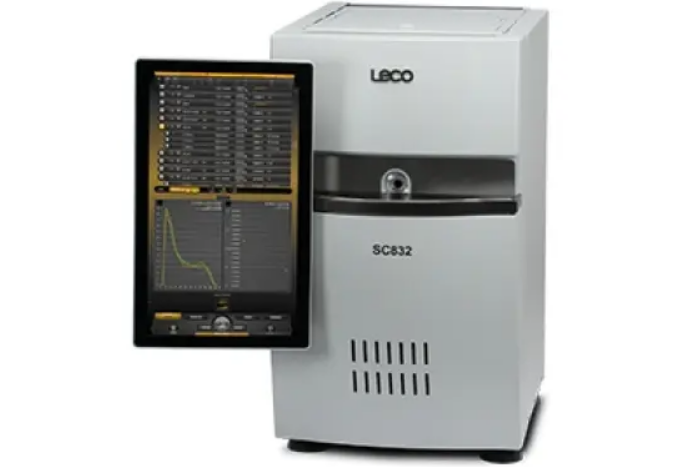832 Series Combustion
Sulfur and Carbon Analysis by Combustion
LECO’s 832 series will bring productivity, precision, and progress to your lab when determining the sulfur and carbon content in a wide variety of organic materials. Our Cornerstone® brand software platform powered by a touch-screen interface, increases usability and operational control without using valuable bench space. A high-efficiency combustion furnace, improved IR cell design, and a robust, rugged design make the 832 a valuable resource for any laboratory needing fast and accurate analysis.

Features
- An optional autoloader will make your lab run more smoothly.
- Improved IR cell for greater precision and stability.
- Maintenance locations are easily accessible.
- The temperature of a high-efficiency furnace system with intelligent control can reach 1550oC.
Applications
Coal and Coke, Combustion Residues, Biomass Materials, Catalyst Materials, Cement, Soil and Ore Materials, Ceramics, Glass, Gypsum and Building Materials, Hydrated Lime and Cement, Fertilizer, Feeds and Plant Tissue Materials, Rubber, Resins and Polymers, Graphite, and Petroleum Products and Additives are just a few of the applications for the 832 series.
Theory of Operation
A sample is weighed onto a combustion boat and placed into a furnace that is normally set at 1350°C and operates in a pure oxygen atmosphere. When the sample combusts, the carbon is liberated as CO2 gas, while the sulphur forms are oxidised and released as SO2. Additional oxygen is injected via a ceramic lance directly above the sample after a certain time to speed up the burning of refractory materials. The combustion gases are swept to the back of the furnace and then forward through the inner and outer furnace tubes, allowing them to remain in the furnace’s high temperature zone for efficient oxidation. The combustion gases depart the furnace and pass through anhydrone tubes, which remove moisture, before reaching the flow controller, which controls the flow of the combustion gases through the NDIR sulphur and/or carbon detection cells.
CO2 and SO2 absorb infrared (IR) light at distinct wavelengths within the IR spectrum, which is how non-dispersive infrared cells work. As gases travel through IR absorption cells, incident IR energy at certain wavelengths is absorbed, with absorption dependent on the cell’s path length. Due to the short and long route length IR cells offered for monitoring of high and low range sulphur signals, the Dual Range (DR) sulphur 832 model has a larger sulphur range. In the 832DR model, the software automatically determines which cell to use for optimal measurement. Unknown sample concentrations are determined in relation to calibration standards.
All quantitative calculations and data are managed and saved on an external PC running LECO Cornerstone brand software.
